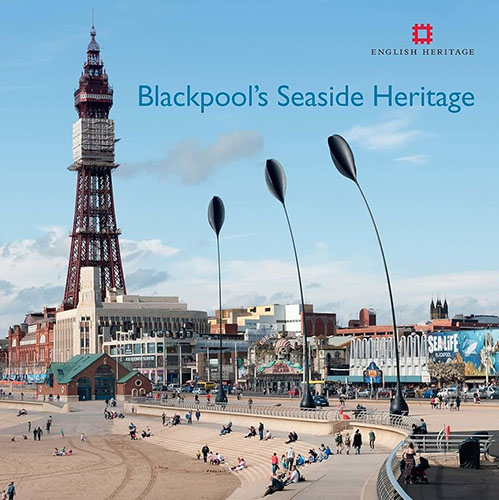
This book will be of interest to everyone with more than a passing interest in Blackpool’s history as well as to architectural historians, buildings archaeologists and urban planners. The book will also have considerable appeal to social historians and those with an interest in the evolution of the seaside as part of the national psyche (see for example Borsay 2013). The book is very well illustrated with contemporary and historical photographs and has a short gazetteer of important buildings on the last four pages.
The book is divided into six chapters – an introduction and five chronologically divided chapters tracing the rise and subsequent decline of this unique holiday destination. Chapter 2 covering the early years of Blackpool (1750-1840) charts the origin of the site from ‘flat and indifferent agricultural land’ to a fashionable resort. The earliest reference to Blackpool for recreation dates to the 1750’s and shows that like earlier resorts such as Brighton and Scarborough its chief attraction was as a place of bathing. By 1788 Blackpool comprised about fifty houses and at this stage the only accommodation for visitors were a handful of large houses or hotels and a number of small cottages belonging to fishermen and farmers. The village became more popular during the early 1800’s so that by 1840 there were terraces of large houses facing the sea.
Chapter 3 discusses the period from the 1840 to 1870 when the opening of a railway station caused an exponential rise in visitor numbers and as well as the construction of visitor facilities such as piers and indoor bath houses. Chapter 4 is concerned with the period from 1870’s to the First World War which saw the expansion of the town to cope with ever increasing numbers of visitors which by 1914 had reached an average of 4 million per year. To cater for the growing expectations of the tourists a series of entertainment complexes were built the most famous of which is the Blackpool Tower. Chapter 5 reviews developments during the twentieth century when the advent of cars and cinemas radically altered the priorities of visitors. By the mid-twentieth century signs of decline first appeared and by the 1960’s the population began to dwindle as visitors were drawn elsewhere. The final part of the book, Chapter 6, discusses attempts to revive the fortunes of the Blackpool with a focus on consolidation of the built fabric and a recognition of the heritage value of some of the more significant buildings.
Based on the book a number of general observations are possible, the first is that for two hundred years Blackpool was built on the basis of expanding visitor numbers and a growing residential population. The rise was particularly dramatic in the period from 1870-1914. During this time the town became a world leader for mass entertainment and tourism. It is clear that Blackpool always sought to deliver the most modern entertainments and spectacles thus the pier built in 1863 was a marvel of Victorian engineering skill using the latest in screw pile technology. Similarly the Blackpool tower was completed in 1894 only five years after the opening of the Eifel Tower in Paris and although only half the size of its French counterpart it was the tallest building in Britain. The use of electricity in the town was also pioneering both for lighting (1879) and to run the trams (1885).
There are two minor criticisms of the book one concerns the omission of any mention of the Blackpool Synagogue which is a Grade II listed building completed in 1916. The development of churches and non-conformist chapels is mentioned and it seems strange that such a significant building is left out of the book. Secondly the book does not pay much attention to the social origins of the visitors in particular the development of the industrial towns of the North-West for which Blackpool was a natural destination. Perhaps this is the subject for another book.
References
- Borsay, P. 2013 ‘A room with a view: visualizing the seaside, c.1750-1914’ pp.175-202 in Tranasctions of the Royal Historical Society Sixth Series, Vol, 23
